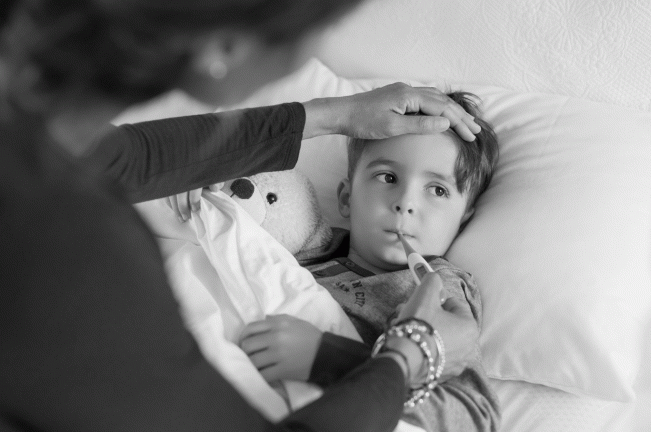Archives
Stay up-to-date and on top of your health with our e-Newsletter and receive updates on current treatments and vital health issues.
Febrile Convulsions

A febrile convulsion is a type of brief seizure that is a relatively common occurrence in some children experiencing high fever. One in thirty healthy children will have a febrile convulsion in infancy or early childhood. Despite its prevalence, many parents are not familiar with febrile convulsions which can be frightening to witness in a child.
Typically this occurs in a child, generally between the ages of 6 months and 6 years, who has a temperature above 38 degrees, and in particular where there has been a sudden rise in the child’s temperature. The fever can occur as a result of any infection, and most commonly simple viral infections. It is impossible to predict which children are susceptible to these seizures, nor can be eliminated.
Signs of a febrile convulsion include non responsiveness, loss of consciousness, body stiffening, sharp jerking movements of the limbs, irregular breathing, head & back arching, eyes rolling, red or blue facial discolouration, and a high fever. Most seizures resolve within a few minutes, with only very few continuing beyond this duration, up to 15 minutes. The child will then slowly regain consciousness but may remain drowsy for a period of time afterwards. Most children make a complete recovery within an hour. Febrile seizures rarely recur within the same illness, but can recur in future illness.
Febrile seizures vs Epilepsy
Febrile seizures are considered benign and have no association with epilepsy. They do not cause brain damage, nor affect a child’s development. Epilepsy, by contrast, occurs as a result of an underlying structural neurological abnormality and occurs in the absence of a temperature.
Most children experiencing a febrile convulsion will only ever have one episode. Approximately one third of children will have further febrile seizures when unwell with a fever. Irrespective of the number of episodes of febrile convulsions, there are no increased risks or consequences of these.
What to do if your child is having a febrile convulsion:
- Try to remain calm.
- Make the area safe e.g. by moving your child away from any sharp objects or hard surfaces against which they may cause themselves harm during the seizure.
- Roll your child onto their side during their seizure to assist their breathing.
- Don’t restrain your child or put anything in their mouth during the seizure
- Time the seizure and observe your child closely under the seizure ends.
- Call an ambulance at the onset if it is your child’s first seizure, if the seizure is lasting more than 5 minutes, if your child does not wake after the seizure ends or appears unwell.
- If the seizure lasts under five minutes and your child has had a febrile seizure previously, see your GP for review as soon as possible to identify and treat the underlying cause of the fever.